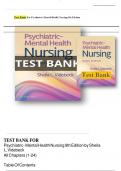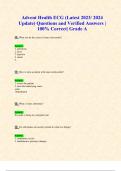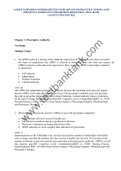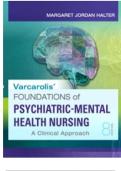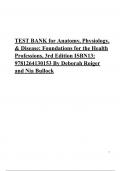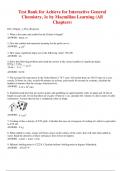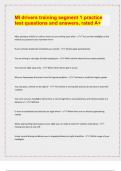Exam (elaborations)
TEST bank For -Psychiatric Mental Health Nursing, 9th Edition by Sheila L. Videbeck, 9781975184773 Chapters 1 - 24 ultimate guide Guide A+
TEST bank For -Psychiatric Mental Health Nursing, 9th Edition by Sheila L. Videbeck, 9781975184773 Chapters 1 - 24 ultimate guide Guide A+TEST bank For -Psychiatric Mental Health Nursing, 9th Edition by Sheila L. Videbeck, 9781975184773 Chapters 1 - 24 ultimate guide Guide A+TEST bank For -Psychi...
[Show more]
